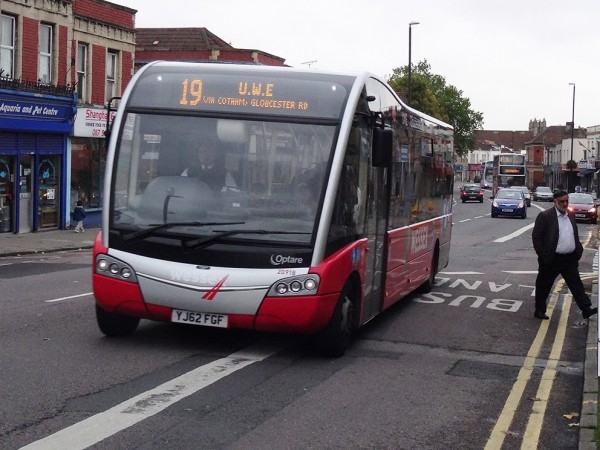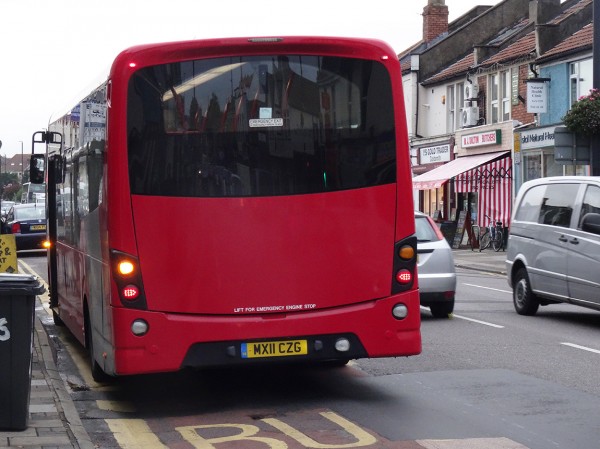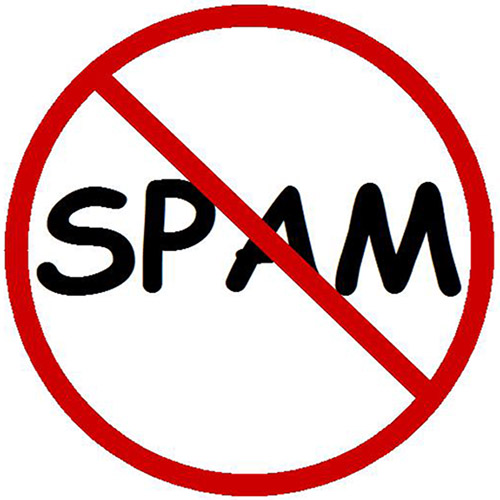 Demand and supply analysis can be applied to a multitude of markets. When there is a disequilibrium in a market, prices will tend to adjust to eliminate any shortage or surplus. But, what of road space? There is a demand and a supply of road space and when there are too many cars for the road space available, congestion is the consequence.
Demand and supply analysis can be applied to a multitude of markets. When there is a disequilibrium in a market, prices will tend to adjust to eliminate any shortage or surplus. But, what of road space? There is a demand and a supply of road space and when there are too many cars for the road space available, congestion is the consequence.
When an additional car enters the road network, there is a cost and a benefit to the driver. However, there are not only costs/benefits to the driver, but there are also costs/benefits to other road-users. When one car drives on the M25 it adds to the number of cars on the road. Once we reach the point where there are too many cars given the road space and thus the flow of cars per minute begins to fall, congestion starts to build up. There is a negative externality involved here – the actions of one person (the driver) impose an additional cost on other drivers (the congestion). It takes every other road user a little bit of extra time to get from A to B the more cars there are on the road.
Congestion is a problem in many parts of the country and various solutions have been suggested. Policies to reduce demand will help the congestion problem by reducing the number of cars on the road. Numerous strategies have been tried, such as restrictions on parking; improvements in public transport; an integrated transport policy; higher parking charges; work place parking levies; higher taxes on petrol, higher car taxes and congestion charging schemes.
 Alternatively, building more roads will directly increase the supply of road space, but this can (and has) simply led to more cars using the additional road space and thus the problem of congestion remains. Bus/taxi lanes are in use across the country and allow the users of public transport to benefit from faster journey times, thus encouraging them to forgo their cars and use buses. However, does this add to the congestion for other people?
Alternatively, building more roads will directly increase the supply of road space, but this can (and has) simply led to more cars using the additional road space and thus the problem of congestion remains. Bus/taxi lanes are in use across the country and allow the users of public transport to benefit from faster journey times, thus encouraging them to forgo their cars and use buses. However, does this add to the congestion for other people?
In Liverpool, a nine month trial is taking place, where bus lanes will be removed to find out if they have a positive effect on reducing congestion. By increasing the amount of road space available to all road users, Liverpool City Council will be able to see if directly increasing the supply of road space will help to meet the existing demand. The possibility, however, is that by increasing the supply of road space, more individuals will choose to use their cars, thus fuelling demand. Many argue that this trial is a step backwards and will add to congestion, reduce the appeal of travelling by bus and impose further costs on the environment. The following articles consider the debate surrounding congestion.
Liverpool City Council will scrap bus lanes for nine months BBC News (27/9/13)
Liverpool bus lanes plan criticised by government Liverpool Daily Post (9/10/13)
Calls for single 30% income tax rate BBC News (21/5/12)
Liverpool scraps bus lanes in trial BBC News (including video) (21/10/13)
Government warning over Liverpool council plans to axe bus lanes in the city Liverpool Echo (9/10/13)
Questions
- Explain why congestion is a negative externality. What other externalities exist with regard to car usage?
- Using a diagram, show the point at which congestion occurs and explain why there is a difference between the marginal private and marginal social cost.
- What will happen to the difference between the marginal private and social cost curves before and after congestion sets in?
- Think about the different solutions to the problem of congestion. In each case, explain whether it is a demand-side or supply-side solution and how it will aim to combat congestion. You should also consider whether it is a short or long term solution and how feasible it actually is.
- How will the abolition of bus lanes aim to reduce congestion?
- There are supporters for bus lanes and supporters for the abolition of them. Justify the arguments on each side of the debate. You should consider the wider implications as well as the impact on congestion.
 A modern day hindrance is spam email clogging up your inbox with, for example, offers for cheap drugs or notifications that you will inherit enough money to retire to the Bahamas. A recent paper by Justin Rao and David Reiley in the Journal of Economic Perspectives investigates the economics of spam mail (which, as I discovered, from the article gets it’s name from a Monty Python sketch). Remarkably, they quote figures suggesting that 88% of worldwide email traffic is spam. Their paper then provides a number of interesting insights into the business of spam mail.
A modern day hindrance is spam email clogging up your inbox with, for example, offers for cheap drugs or notifications that you will inherit enough money to retire to the Bahamas. A recent paper by Justin Rao and David Reiley in the Journal of Economic Perspectives investigates the economics of spam mail (which, as I discovered, from the article gets it’s name from a Monty Python sketch). Remarkably, they quote figures suggesting that 88% of worldwide email traffic is spam. Their paper then provides a number of interesting insights into the business of spam mail.
First, given that most recipients simply delete it, why is spam mail sent out? For the benefits of sending it to exceed the costs, it must be that somebody is reading and responding to it and the costs must also be reasonably low. Rao and Reiley are able to quantify these costs and benefits. They estimate that if 8.3 million spam emails are sent, only 1.8% (approximately 150,000) will reach the intended recipients’ inboxes, with the remainder being blocked or filtered out. Of these 150,000, just 0.25% (375) are clicked on. Furthermore, these 375 clicks generate just a single sale of the advertised product which is typically sold for around $50. Assuming that free entry of spammers leads to them earning zero economic profit, this means that it costs the spammers around $50 to send the 8.3 million emails.
Second, spam mail clearly imposes a considerable negative externality on society. This includes wasted time for consumers and the costs of the extra server hardware capacity required. Rao and Reiley are also able to quantify the size of the negative externality created. First, they estimate that:
“American firms and consumers experience costs of almost $20 billion annually due to spam.”
This can then be compared to the benefits senders of spam get:
“….. we estimate that spammers and spam-advertised merchants collect gross worldwide revenues on the order of $200 million per year. Thus, the ‘externality ratio’ of external costs to internal benefits for spam is around 100:1.”
They then compare this to estimates for other negative externalities such as car pollution and conclude that the size of the negative externality from spam is significantly greater.
Finally, they also point out that it is predominantly the larger email service providers i.e. Yahoo! Mail, Microsoft Hotmail, and Google Gmail who have both the incentives and resources to fund interventions to eradicate spam. For example, in 2009 Microsoft and Pfizer (the manufacturer of Viagra which faces competition from counterfeit versions often advertised by spam) financially supported the successful operation to shut down the largest spam distributor. Clearly, such operations have large positive spillovers for email users. However, as they also discuss, anti-spam technology also increases the fixed costs of competing as an email provider and they suggest that this has contributed to the increased concentration in the market.
The unpalatable business of spam The undercover economist, Tim Harford (19/07/12)
Huge spam botnet Grum is taken out by security researchers BBC News (19/07/12)
Spammers make a combined $200 million a year while costing society $20 billion BGR, Dan Graziano (28/08/12)
Questions
- Explain why free entry results in zero economic profit.
- Explain how an increase in fixed costs can lead to an increase in concentration.
- Why does Microsoft have large incentives to eradicate spam mail?
- In what ways does the externality created by spam mail differ from other forms of advertising?
- How might government policies alter the costs and benefits of sending spam mail?
 Binge drinking is a problem that has seen much attention, especially with regards to minimum price controls. However, in this blog, we consider attention in this sector concerning taxation on beer.
Binge drinking is a problem that has seen much attention, especially with regards to minimum price controls. However, in this blog, we consider attention in this sector concerning taxation on beer.
Alcohol is widely considered to be a de-merit good with negative externalities imposing external costs on society. This is one of the reasons why taxes are imposed on alcoholic beverages. By increasing production costs to the firms providing these drinks, prices rise and hence the policy aims to discourage consumption.
During the recession, many businesses have seen demand fall and one sector hit particularly hard because of this and very high tax rates has been the local pub community. Duty on beer has increased since 2008 by some 42%. As such, many rural and suburban communities have seen their local watering holes close down and this has led to a campaign by CAMRA to force a debate in Parliament, as a means of protecting ‘one of Britain’s oldest and best loved institutions’. Data suggests that 12 pubs per week are closing down, thus the future of the industry is now under threat. This may also have further damaging effects on local communities, as it may adversely affect the social aspect of communities. Camra’s Chief Executive, Mike Benner said:
‘Whether situated in a small village, city high street, or on the edge of a housing estate, pubs are so central to our society that whole communities can grow around a particular pub.’
According to a study, pubs in Lancashire and the West Midlands have been hardest hit by the pub closures. If pubs don’t pass the tax increase on to consumers in the form of higher prices, then they must bear the burden. If they do pass the tax rises on to consumers then the larger chain firms can increase their market share by selling at a lower price. They are also facing growing pressure from the supermarket industry, which are able to sell cheap alcohol, also contributing to going to the pub becoming an ‘unaffordable activity’. The following articles consider this industry.
Pub closures spark beer tax plea The Press Association (30/4/12)
A dozen pubs close each week Telegraph, James Hall (30/4/12)
Calls for beer tax rethink as 12 pubs shut every week BBC Radio 1, News Beat, Steve Holden (30/4/12)
Pubs in the West Midlands hit hardest by pub closures ITV News (30/4/12)
Questions
- Illustrate the effect of a tax being imposed on a product such as beer.
- In this market, would the tax be more likely to be borne by the producers or consumers? Explain your answer and illustrate on the previous diagram why this is the case.
- Why are supermarkets able to compete local pubs out of the alcohol market? Do you think a minimum price will have any effect?
- What is a de-merit good? Illustrate the concept of a negative externality on a diagram.
- Explain how a de-merit good causes the market to fail. To what extent does the tax on beer solve the market failure?
- Why are there likely to be adverse effects on local communities? Could this have an adverse effect on economic activity in the area?
Market failure occurs when the free market fails to deliver an efficient allocation of resources. Pollution by cars is a prime example of a negative externality or an external cost. We pay road tax and face high tax rates on petrol, but another form of government intervention is due to come into effect. From the 1st January 2011, nine models of electric car will be eligible for grants of up to £5000 (although only three models will be immediately available). By subsidising certain electric cars, the government is aiming to give people an incentive to switch to these so-called more environmentally friendly cars, as they will now be cheaper.
There are concerns, however, that generating the electricity to charge these cars still emits carbon dioxide. The Transport Secretary, Philip Hammond, said:
There’s no point in switching the car fleet to running on electricity if the electricity emits vast amounts of carbon dioxide.
So is the electric car the car of the future?
Nine electric cars will be eligible for subsidies BBC News (14/120/10)
Cash grants for environmentally friendly cars announced Telegraph (14/12/10)
£850,000 to kickstart use of electric cars in NI BBC News (14/12/10)
UK names nine electric cars eligible for subsidy Reuters (14/20/10)
Questions
- What is the purpose of a subsidy? Using a diagram explain how it will work and what the impact should be.
- Why is pollution an example of a market failure? Illustrate this on a diagram.
- Why could electric cars also be an example of a market failure? Illustrate this on a diagram.
- How will the subsidy aim to encourage more firms to produce electric cars and also more consumers to buy them?
- Is there an argument for increased investment in technology to produce electric cars more cheaply and more effectively?
- Why is there such a high demand for car usage?
$8 billion – this is the likely cost of the BP oil leak, which spilled 206 million gallons of oil into the Gulf of Mexico. Whilst the oil leak has been stopped for some time, there were ongoing concerns that the leak would re-appear due to the underwater pressure. The cost of stopping the leak has been substantial, but BP will face further costs, as the company begins to pay out compensation.
$20 billion is the compensation that residents of the Gulf of Mexico will receive. Further to this, BP has said that it will invest more money in promoting the tourism industry there, which has suffered from the oil spill. However, what about the fishing industry? Although compensation will be paid for the losses incurred, will this continue in the long term? The oil may cause a loss in productivity in certain populations of sea-life. How will this impact us? If certain fish became scarcer, then their price will rise accordingly, whether you purchase the fish at a shop or have it as a meal in a restaurant. To make matters worse, the hurricane season has arrived in the affected areas, which will make the clean-up effort even harder.
As BP’s share price has fallen, individuals have suffered from lower dividends. Jupiter Income Trust had almost 10% of their portfolio invested in BP, which largely explains the 9 per cent drop in their payout.
Articles
BP oil well ‘poses no further risk’, says Allen BBC News (5/9/10)
BP oil spill fallout hits Jupiter dividend Mail Online, Richard Dyson (4/9/10)
Gulf Oil leak: biggest ever, but how bad? BBC News, Richard Black (3/8/10)
BP oil spill didn’t hit tourism too hard Jabber Lounge, Gloria Rand (5/9/10)
BP oil victims face strings on $20 billion oil fund Telegraph, Rowena Mason (20/8/10)
BP share price data
BP historical share prices Yahoo Finance
BP share price chart Interactive Investor
Questions
- Which industries have been affected by the oil leak? Don’t think too close to home – look at the wider picture.
- Is the oil spill an example of a negative externality? Can it be illustrated on a diagram and, if so, how?
- What has happened to BP’s share price since the beginning of the oil spill? Put this on to a graph to trace the trend. Try to explain the changes in the share price using a demand and supply diagram.
- How would BP have calculated the compensation to be paid to residents of the Gulf of Mexico? Would cost–benefit analysis have been involved?
 Demand and supply analysis can be applied to a multitude of markets. When there is a disequilibrium in a market, prices will tend to adjust to eliminate any shortage or surplus. But, what of road space? There is a demand and a supply of road space and when there are too many cars for the road space available, congestion is the consequence.
Demand and supply analysis can be applied to a multitude of markets. When there is a disequilibrium in a market, prices will tend to adjust to eliminate any shortage or surplus. But, what of road space? There is a demand and a supply of road space and when there are too many cars for the road space available, congestion is the consequence. Alternatively, building more roads will directly increase the supply of road space, but this can (and has) simply led to more cars using the additional road space and thus the problem of congestion remains. Bus/taxi lanes are in use across the country and allow the users of public transport to benefit from faster journey times, thus encouraging them to forgo their cars and use buses. However, does this add to the congestion for other people?
Alternatively, building more roads will directly increase the supply of road space, but this can (and has) simply led to more cars using the additional road space and thus the problem of congestion remains. Bus/taxi lanes are in use across the country and allow the users of public transport to benefit from faster journey times, thus encouraging them to forgo their cars and use buses. However, does this add to the congestion for other people?
